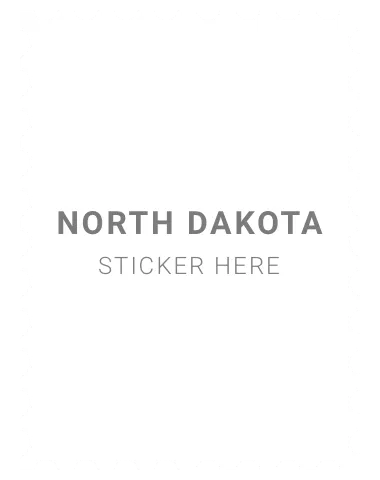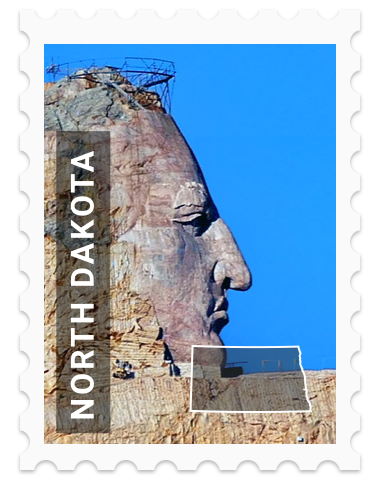North Dakota
Discover North Dakota

Capital
Bismark
Statehood
November 2, 1889
North Dakota, with its rolling prairies, wild Badlands, and mighty rivers, was inhabited for centuries by the Dakota and Lakota Sioux, Mandan, and Hidatsa tribes.
In the early 18th century, European explorers and fur trappers arrived, setting up trading posts and establishing relations with the indigenous peoples. Lewis and Clark's Corps of Discovery expedition famously passed through North Dakota in 1804-1806, noting the natural beauty and abundant wildlife.
The Homestead Act of 1862 encouraged settlers to establish farms in the region, leading to the growth of towns and the development of agriculture. North Dakota's capital, Bismarck, was founded during this period. The Northern Pacific Railway, completed in the late 19th century, facilitated travel and trade in the state.
North Dakota has faced its share of challenges, including economic downturns during the Great Depression and Dust Bowl era. The discovery of oil in the 1950s transformed the state's fortunes, leading to the establishment of the Bakken Formation oil fields.
For history enthusiasts, the North Dakota Heritage Center in Bismarck offers a comprehensive look at the state's past, from its native peoples to its modern-day developments. The state's historic forts, such as Fort Abraham Lincoln and Fort Totten, provide a glimpse into the days of the Old West.
Today, North Dakota is a place where the pioneering spirit of its early settlers lives on, and the vast, untouched landscapes still inspire explorers to venture forth. Whether you're tracing the footsteps of Lewis and Clark or admiring the beauty of Theodore Roosevelt National Park, North Dakota calls with its rich history and enduring natural wonders.
Source ChatGPT
Major Airport
Hector International Airport

Elevation
275 m
Opened
1927
Runways
3





